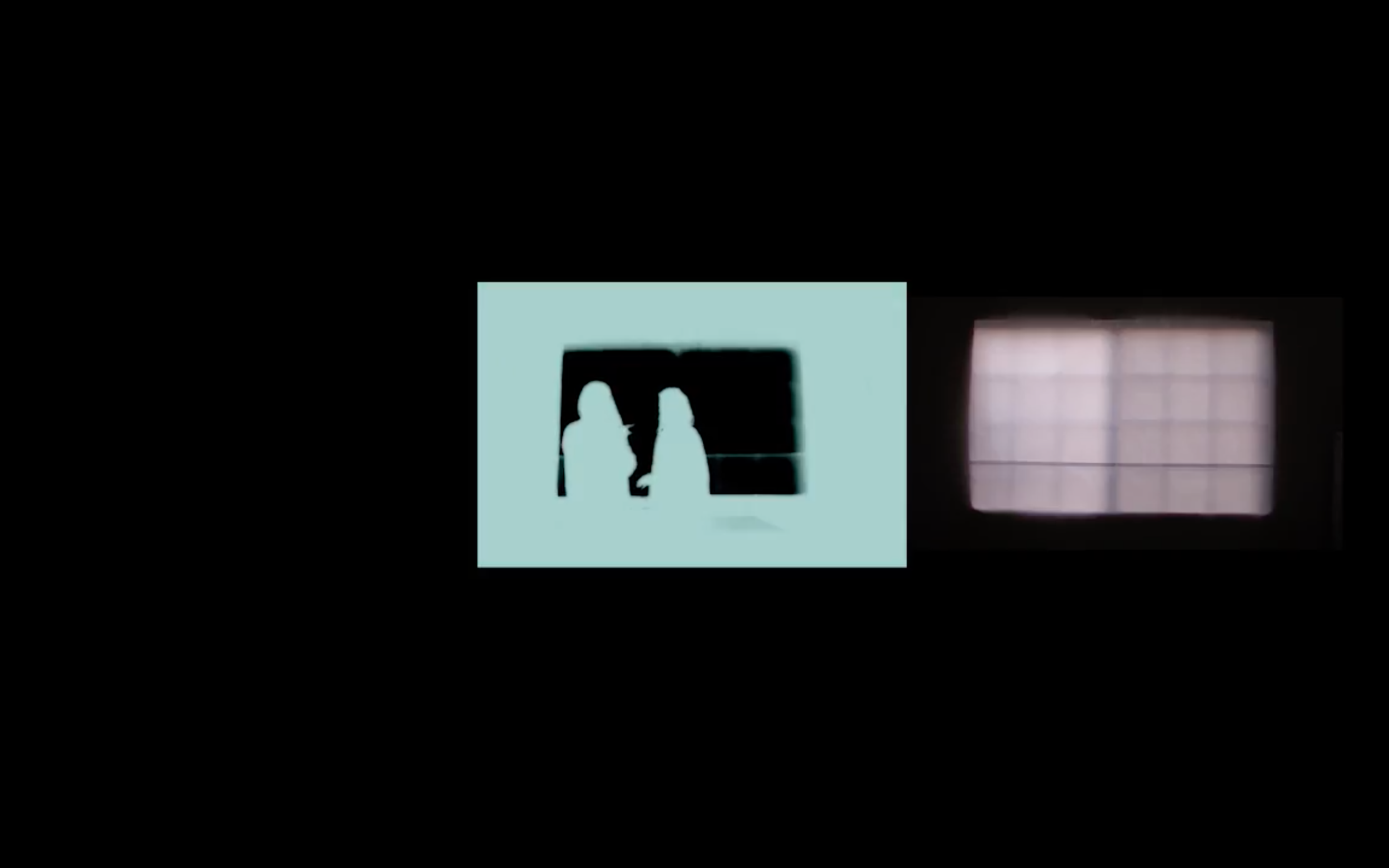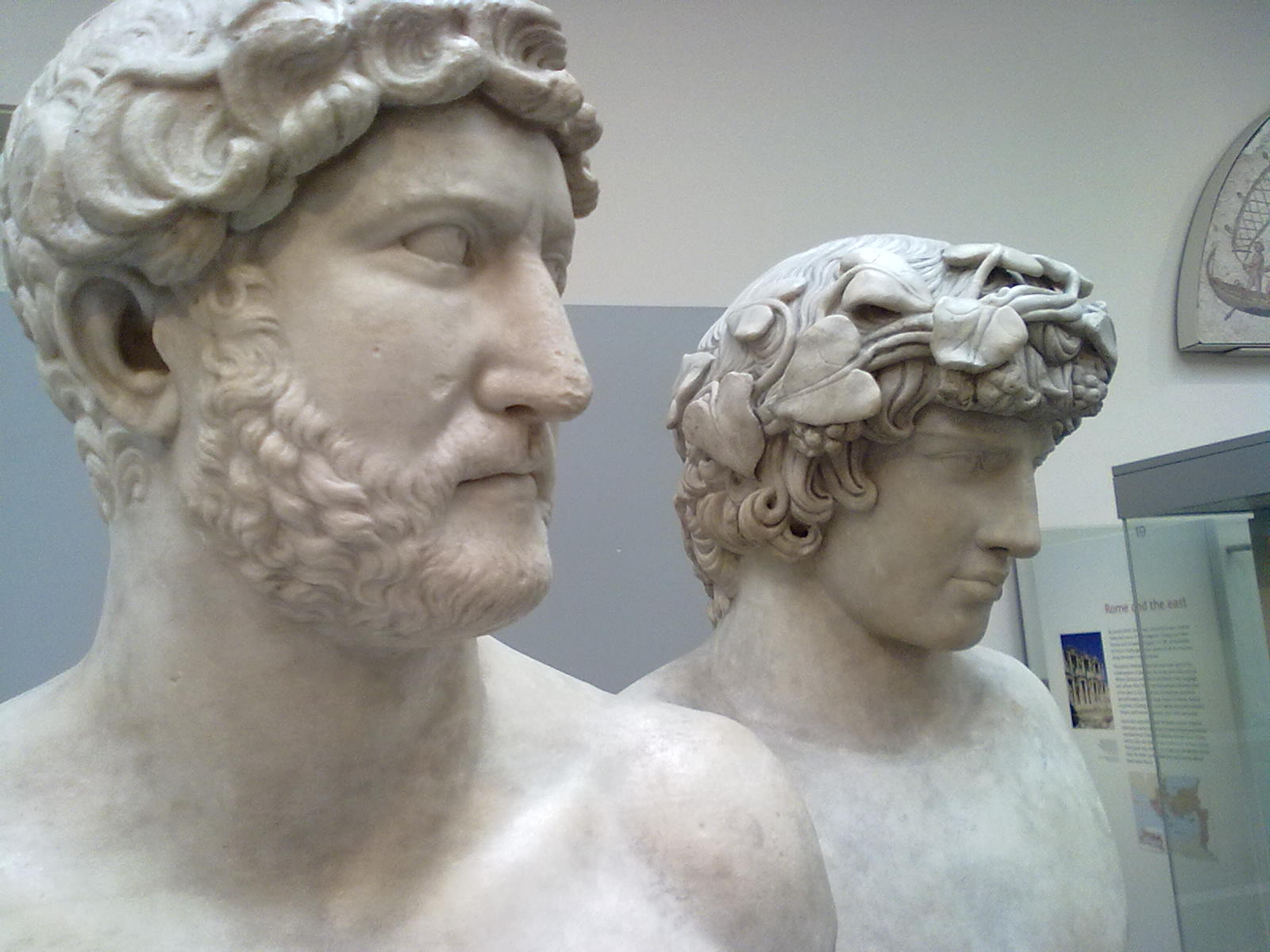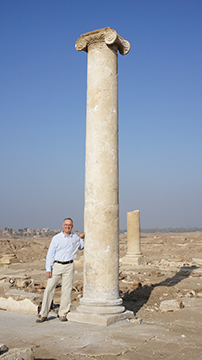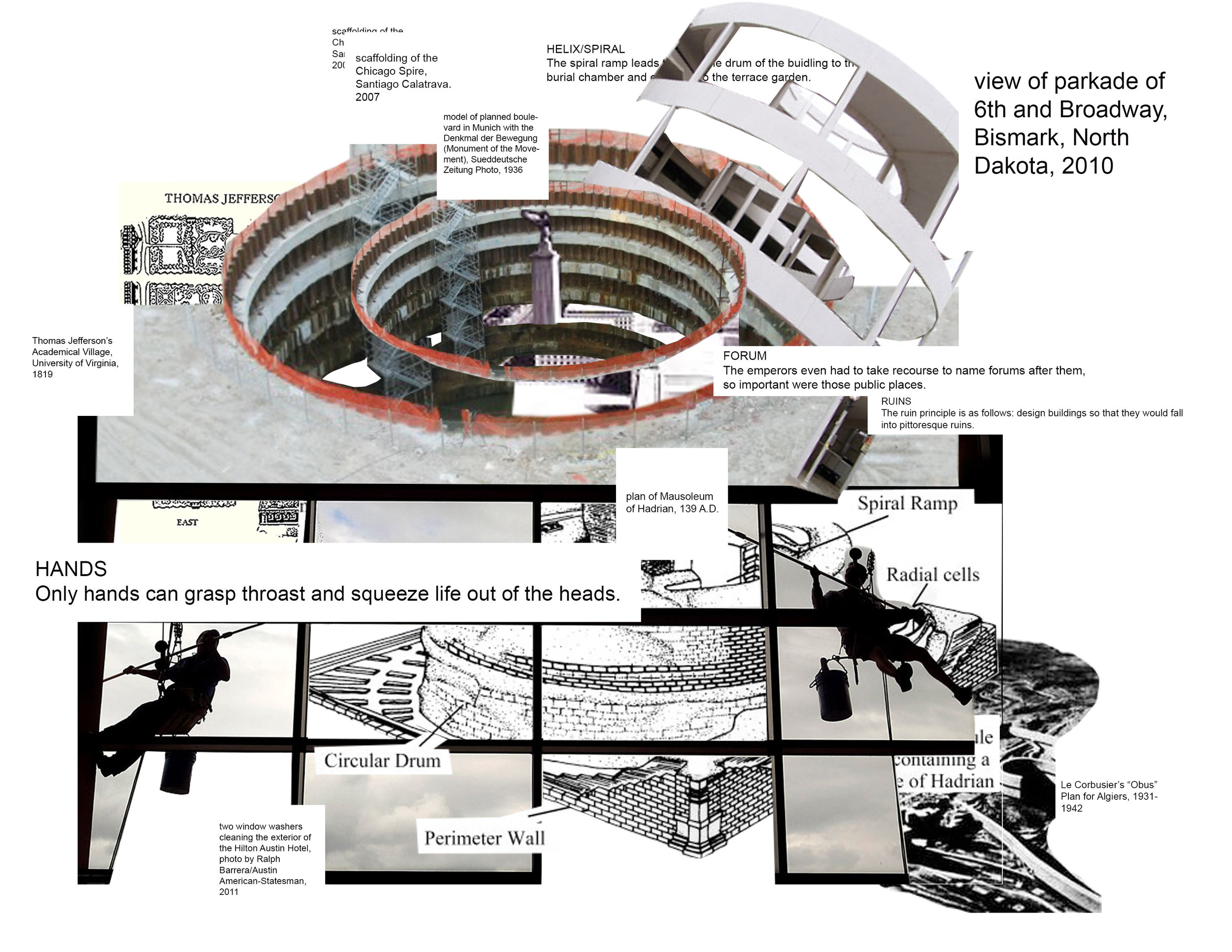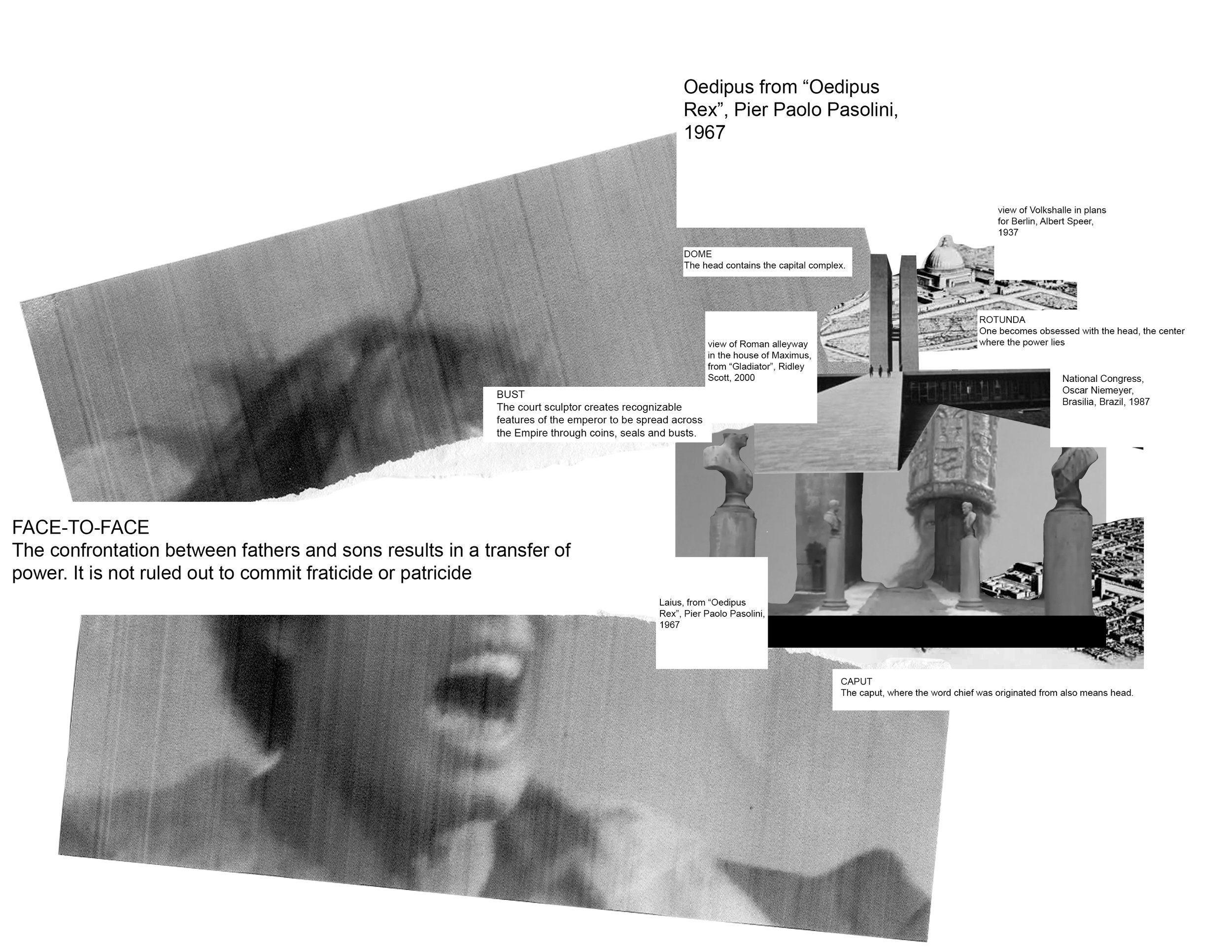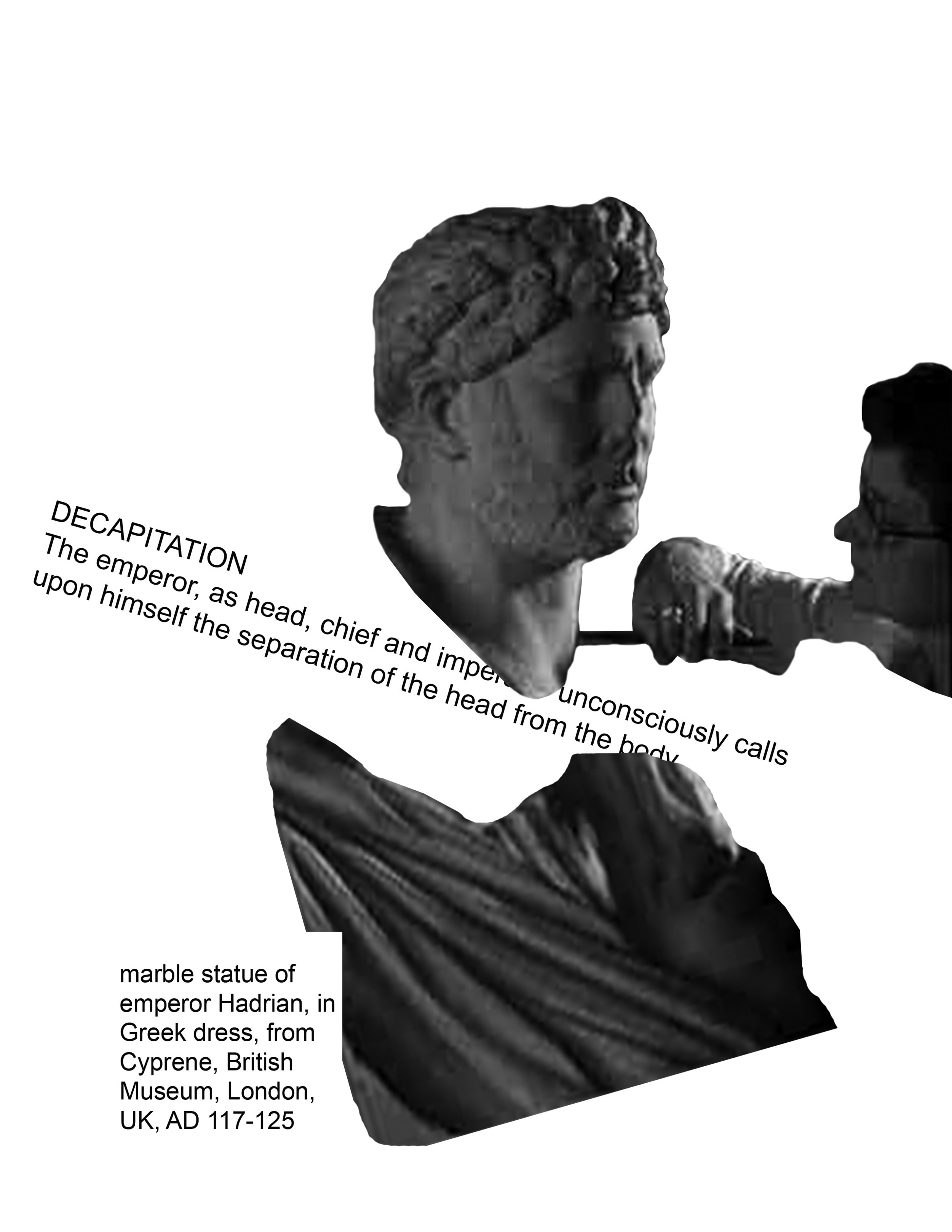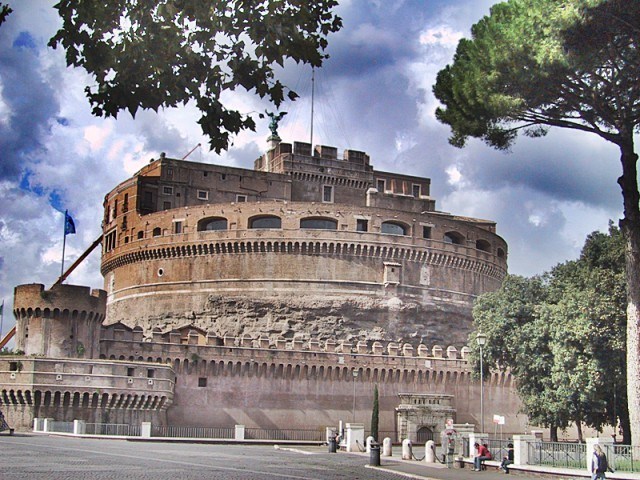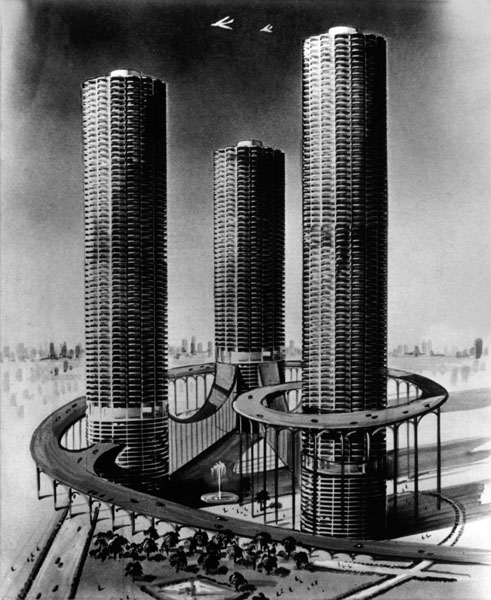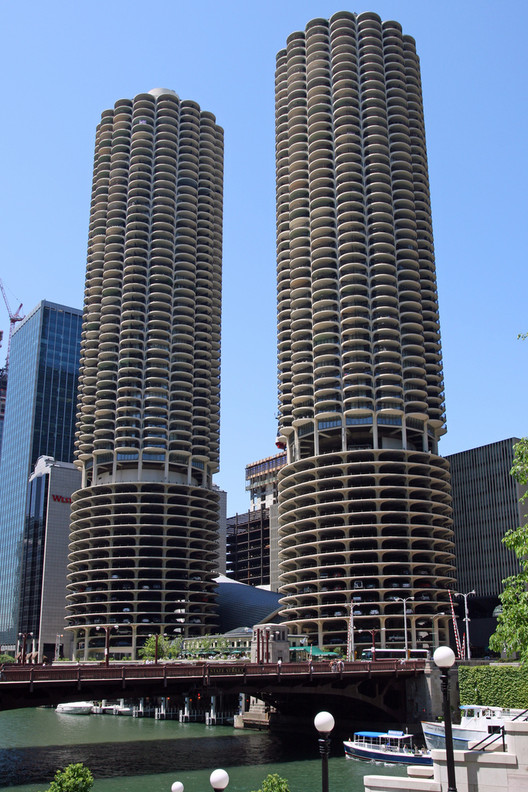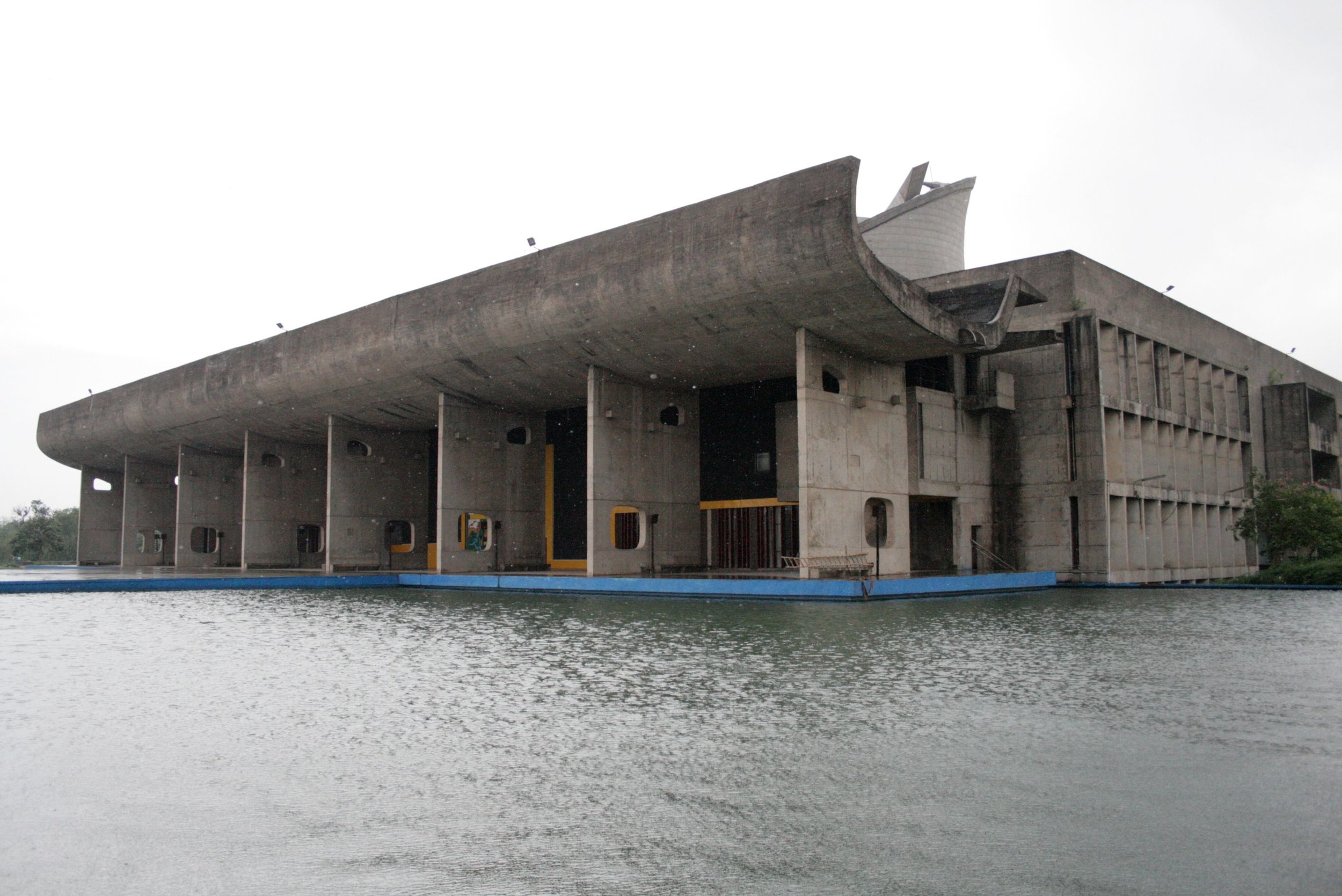Slicing History: Prima Jalichandra-Sakuntabhai’s performative lectures and collages
/Note: All text in purple is collected from interviews and attributed to Prima Jalichandra-Sakuntabhai.
“The work of desire is the result of manhandling a text. Desire does not speak; it does violence to the order of utterance.”
Los Angeles-based artist Prima Jalichandra-Sakuntabhai uses unexpected techniques, such as the slide presentations, lectures, and collages on transparency, along with sculpture, immersive installation, and audience interaction, to upend and subvert the monolithic power structures of Western culture, and imagine an alternative. The artist attacks the process of historicization by critiquing the academic institution, and the production of space, but works within academic structures and linear time. Born in Thailand, and educated in the United Kingdom, France, and the United States, the artist is interested in ideas of spatiality, and their effect on structures of power, such as education, national boundaries and cultural heritage. Zooming in and out of the general and personal, Prima delves into how these structures dictate our lives and identities.
Evidencing the legacy of Western history’s resounding influence, such as the great monuments of Ancient Rome, and academically-proven facts, Prima calls into question widely accepted “truths,” and therefore, the structures of power that made them, by manipulating and re-presenting them.
Prima has been engaged with the idea of site specificity for several years. A series, titled none other than "(Site) Specificity," considers the notion of site specificity today, within a globalized, digitized culture. As Prima looks to the past, most often taking architecture or historical figures as their material, the artist mixes factual and personal information through the form of parodies of artist talks or academic lectures. Prima projects slide presentations in a linear narrative, which is supported by historical facts, and an authoritative tone.
During the live performances, Prima interacts with the projection, manipulating the images and moving objects in the space. The artist explains that the space of projection itself becomes confused with the space of the audience who is invited to become part of the space and thus submits themselves to the manipulation of the projection as well. The audience members, images, texts, and sounds are all part of the set, whether they are used or not.
Prima Jalichandra-Sakuntabhai, (Site) Specificity III, 2017. video projector, table, bookshelf, books, 2 mirrors, mirror cube, 1980 globe, upright bed covered in black fabric, 2 windows covered in vellum, emergency flashlight, wall pieces, dichroic on acrylic.
Prima recently performed (Site) Specificity III (or SSIII) in their bedroom in Los Angeles. The work is fixates on the idea of absence, and asks if a site becomes specific if a person is removed or disappears from it. The video opens with a stable shot of two windows: one physical window, covered with a sheet, and another live video feed, projected onto an upturned bed, of the same window in X-ray filter. From the outset, SSSIII conflates the frame of the presentation and the outside world. Ghostlike silhouettes of the performance’s attendee-participants enter into the frame of the center projection, holding plastic cups and removing their jackets, as they settle in.
A third image appears, left of center - a live video feed from the artist’s point of view. The performance accompanies the performer and the audience from day to night, as the sun progressively sets, making the projection appear on the screen. The artist enters the frame, and we see their body three times: Prima’s view (the image from the camera affixed to their body), Prima in front of the real window in their bedroom, and Prima in X-ray projection.
Prima approaches the mirror and produces a reflection. The mirror, globe, and the laptop are objects in the room that are imbued significance, and returned to repeatedly throughout the length of the work. The space of the bedroom, transformed into a site of refraction (mirrors and laptop screens) and citation (maps, globe and books) conjures the absent body of the performer and the audience, but also the absent bodies of historical and intellectual figures. Sometimes disappearance makes one appear, in a different form. Even if one is gone physically, they can become all the more present.
The video includes text at the bottom of the frame, like subtitles. These texts become disconnected from the spoken narration, describing the objects in the room, or offering citation. They sometimes even offer humorous confessions. For example, while Prima is rambling on about architectural theory and leafing through Rupert Wittkower’s fundamental 1971 tome, Architectural Principles in the Age of Humanism, the accompanying subtitle reads, “This entire section I made up,” making one wonder if it ever mattered in the first place.
Hovering alongside the performance, is the parabolic story of Emperor Hadrian and his male lover, Antinous, who drowned in the Nile on October 24, 130 AD. Literary sources tell us that Hadrian was profoundly saddened by Antinous’ death. Hadrian built a new city called Antinous on the Nile, where he built a large temple, set up festivitals, so that he could be worshipped for eternity. Prima is interested in the story itself, but also how the story has been publicized and utilized by colonial agendas, revealing that although it is a deeply romantic story, it is used to cover up the atrocities committed by Hadrian during his pursued colonization of northern Africa. In the 1950s, the French author Marguerite Duras used his story to justify French imperialism there. The books in the bedroom are not just a backdrop, but used for live citation. These seem to be mostly architecture books, as one can make out monumental ruins, maps, and artifacts on their pages. But, as the performer shines the flashlight onto passages in books, the information become obscured, rather than illuminated. Prima is revealing the uselessness of foundational texts that we have based the understanding of our past and cultural values upon.
SSIII stems from a deep-rooted feeling of detachment. By constantly removing oneself from a site, one has to take recourse to one's imagination to keep the site alive. The narration states that it is tiresome to disappear in one’s own domestic space, as one is always measuring the weight of their body against the objects and architecture around. One can still be shocked by one’s own image in a certain place, despite physical distance or removal of aesthetic similarities.
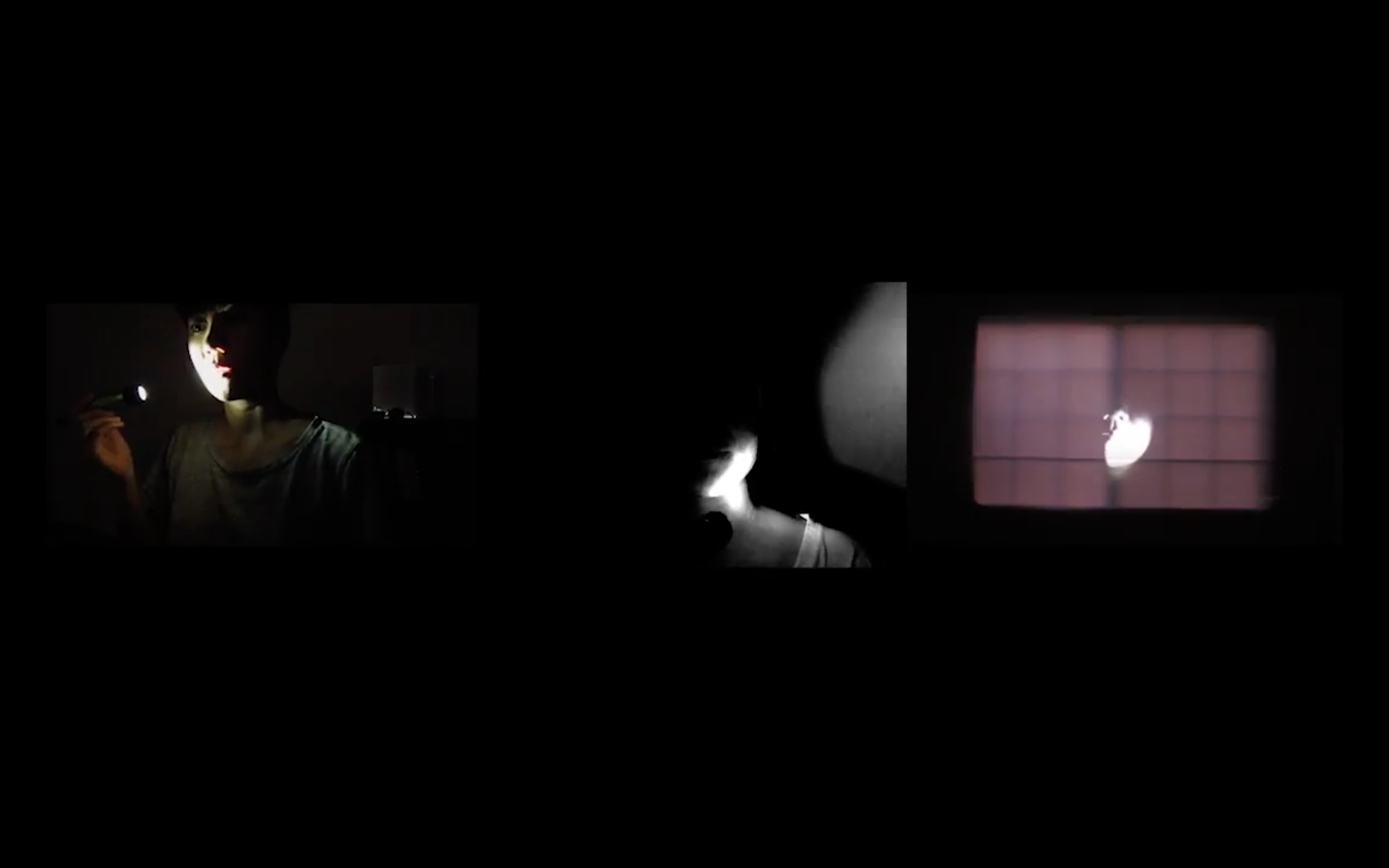
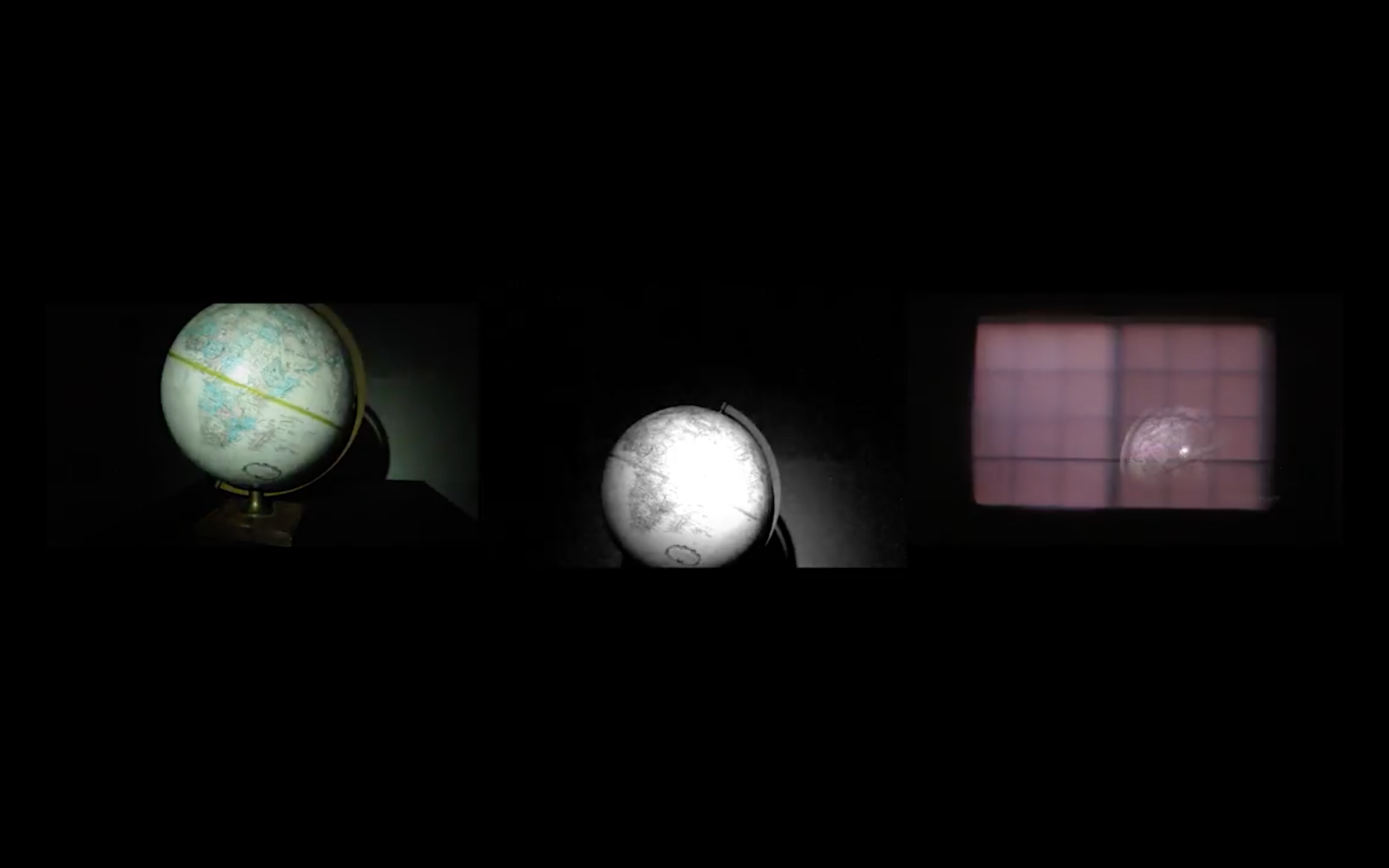

The artist thinks of history as a subjective narration, that has both personal gender identification and more general, socio-political ramifications. The orthography of the word gives us a compelling idea: that HIStory is male, specifically white cis-male heteronormative patriarchy. I think my attraction/repulsion to history allows me to reenact and perform for a single fleeting moment, what it would like to be male. But there is also the term story embedded in the word 'history', making it an almost fictional narrative, told from the perspective of the male dominating power. But I do not hide the scaffolds of the making of this history. Critiques of knowledge systems, especially those produced within academia, run throughout all of Prima’s work. Prima states that they want the process of making history to be recognized as an essential part of its narration, that it is constructed. We have to be careful in considering for whom and to whom, this construction of knowledge is addressed to. Even if a theory supports our own argument, who might it be harming? Prima maintains the position of the inquisitor, continually questioning how we come to accept one ideaology or fact over another. The medium of performance serves the artist well here because the medium allows for the experience to change, according to a variety of variables like, the context of the space it is being performed, the reaction of the audience, the present in which it is being performed. nothing is not allowed to be questioned, even the very structure of how we build and continue to live in the present. The linear structure of history and ideas of progress haunt Prima’s work. “Progress” usually denotes an evolution from a more basic, or in some way, worse situation to one that is better, more advanced, etc. Prima uses the arbitrary nature of linearity and progress to justify their own absurdist arguments about the genealogy of power. This linear analysis is important because it allows one to connect chains of the passing of power. But, Prima argues that the passing of power is in fact regressive, and follows a circular or spiral pattern in time. That famous saying "All roads lead to Rome" is the fantasy of a world connected to a single center through politics of colonization and conquest. This fantasy culminated into our present globalized era. The central node is capital, I would say, and because capital in intangible and fluctuant, constantly changing hands, it is harder for us to "behead the father" (referencing my collages). To disengage with this repetition is to break the structure that we often find ourselves repeating. It is a hard task to constantly be re-imagining alternative forms of knowledge and co-organization.
Prima clearly has a wrought and intense relationship with academia. The artist comes from a long lineage of professors (almost all of their family members have held teaching positions), so the playing the professor without taking it on is a sort of denial of their predetermined destiny.
Prima has also been influenced by several professors, such as Monsieur Charles Galissot, and describes him as a caricature of a French artist/martial arts master. Prima recalls: I was making these cage structures of out chicken wire and plaster. Some I left flat on the ground and others stacked on top of one and another, like cube columns. He gave me two words to think about: nomadic and sedentary. Certain cultures have to be ready to get up and go, while others need a solid foundation in order to survive. "You," he told me in his serene voice, "are one of the culturally rich nomads floating through the world." Even though I was making, and am somewhat still making, work that strives to play with objectivity, this knowledge that the forms come from a very subjective experience of the world, still resonates with me today. He gave me the belief in art, even if it can be idealistic and elitist. I will always question art and the process of art-making and its distribution. But I also believe in its power to give us space to critically reflect on the world that we have built. Another mentor is Francois Niney, a philosopher and film critic at the Sorbonne. He marries Marxism, with early 20s-70s avant-garde documentary, with linguistics and love for a good glass of Sancerre. Maybe he was the first person to inspire me to make dissociative subject-matters meet, and can change tonality in his own lectures very easily.
At CCA, Ignacio Valero is another conceptual gymnast. With simply looking at the etymology of the term "economy", from oikos which means "hearth", he leads us back to the birth of capitalism with the start of private property and somehow manages to link the Platonic concept of the soul into the mix. I think I really like the term "conceptual gymnast" and that's probably an exercise I constantly do to come up with scripts for my performative lecture.
The linear structure of history and ideas of progress haunt Prima’s work. “Progress” usually denotes an evolution from a more basic, or in some way, worse situation to one that is better, more advanced, etc. Prima uses the arbitrary nature of linearity and progress to justify their own absurdist arguments about the genealogy of power. For example, Prima connects the threads of history by tracing the path of architectural “progress: beginning with Roman monumental architecture, leading to Neo-classical designs (Republican and imperialist ideals hidden, or not) to Modernism. This linear analysis is important because it allows one to connect chains of the passing of power. But, Prima argues that the passing of power is in fact regressive, and follows a circular or spiral pattern in time. That famous saying "All roads lead to Rome" is the fantasy of a world connected to a single center through politics of colonization and conquest. This fantasy culminated into our present globalized era. I do not want to give so much credit to Robert Smithson, but his notion of time as entropic is actually what informs my work. There is a semblance of progress because we are spiraling towards further decay, but this spiral movement also makes up a time that repeats itself, as power has to repeat itself to be somewhat justified, as history has to repeat itself, to show its continual power.
To disengage with this repetition is to break the structure that we often find ourselves repeating. It is a hard task to constantly be re-imagining alternative forms of knowledge and co-organization.
Prima also experiments with collage on transparent sheets, which are commonly used in classroom slide presentations. Prima combines different media that make meaning: photographs of historical figures, plans of cities, architectural blueprints, and text-based captions and definitions. When one pastes back together the torn pages of a history book, a new story is made. Prima has already worked intensively with the images in their performance work. Most of the images were from performing Antiquity, one of the first iterations of the performative lectures Prima made in 2015. Cutting and layering the mages helped Prima distill the constructive elements of the image at hand, and how the images relate with one another to make meaning.
Le Corbusier Entering Hadrian's Mole, 1965 is a fictional collage, based on a myth Prima created rather than an established myth. Prima wanted to bring together the famed French architect, Le Corbusier (1887-1965) and Emperor Hadrian (76-138 AD), as the artist sees them as deeply connected and influential to one another, over spans of centuries. The collage presents images of Le Corbusier’s “Obus” Plan for Algiers (which would include a highway that would bypass the Casbah completely), the last photograph of the architect, Le Corbusier, wading into the Mediterranean Sea. The image is sliced and multiplied, as the second Le Corbusier is wading into the plan for Hadrian’s mausoleum.
Emperor Hadrian was also an architect. His mausoleum resembles a Modernist parking structure, of which Bertrand Goldstein's Marina City in Chicago is a good example. The idea of a centralized organization for space, with an equal distribution of cells is a very Modernist idea of equating architecture with the socialist notion of equality, championed by Le Corbusier.
The notes explain how power is passed down through a line of male rulers, and defining “res publica,” the relationship of a tyrant to the soil. Prima describes Hadrian and Le Corbusier’s similar colonial aims, as they both focused on “the Orient” as the location for their designs. But perhaps, they also wanted to experience the disorder and romanticism associated with northern Africa.
Prima Jalichandra-Sakuntabhai, Le Corbusier Entering Hadrian's Mausoleum, 1965, 2018. Black and white prints on transparencies.
After Le Corbusier proposed and failed to design a rational urban plan for Algiers, he moved on to implement his designs in the city of Chandigarh, in India, a city boasting its independence and modernity from British rule. We can see how Modernism is used as a neo-colonial tool, and Le Corbusier, therefore succeeds Hadrian, expanding farther into the East. After Le Corbusier dies (drowning in the Mediterranean Sea), his body is accepted into Hadrian’s mausoleum. The collage commemorates this event.
Prima is working on a new performative lecture, based on the same title. Creating a more elaborate, temporal relationship between the two men, as a contrast to the static image. In this way, the myth is further legitimized.
Prima’s work relies on academic theory, functioning within and alongside it, almost like a dream. Thinker and critic Jean-François Lyotard published extensively on the relationship between image and text. He was particularly interested in Sigmund Freud’s The Interpretation of Dreams (1899). His essay, “The Dream-Work Does Not Think” draws on Freud’s analysis of dreams and desire.
To grasp the connection between the dream-work and Prima’s work, one must more fully understand the illusive dream-work. The intelligible discourse of a dream, or dream-thoughts, does not produce a meaning, or sens (in Lyotard’s original French text). Instead, it produces a signification, as explicit as a term in verbal language relating to an idea or object, for example. A dream is a form of thinking that is created by the dream-work through a particular process of transformation. This transformation is not an interpretation or translation, but the process of giving something a new form.
The dream-work cannot be put into the language of discourse, but crumples up the primary text and scrambles the signs on its surface. Dreams are in fact the work of desire. He maintains that, rather than desire being a second dialogue within an existing discourse, desire is the act of dis-figuration within the dream. It is the violence done to a text.
Prima’s work approaches Lyotard’s concept as the artist is constantly calling into question and transposing objects from discourse, making them illegible. The viewer can see the crumpling of the primary text, where the dreamwork can be revealed, if only for a moment, and offer one a glimpse of hope for what the structures of power that define us can become.
Prima Jalichandra-Sakuntabhai is a transdisciplinary artist, currently based in Los Angeles. Their artistic practice ranges from sculpture, installation, collaboration, video and performance. They were born in Bangkok, Thailand, in 1989, and grew up in Oxford, England and Paris, France. Due to their nomadic upbringing, they became interested in spatial implications of the discourse of power. In particular, they examine how the West imposed its hegemony through architecture and spatial organization. Their interest in architecture, film, power, labour and modes of production bring about forms and narratives that examine the formation of the subject in our global transnational world and the primacy of technology over manual labour. The works are platforms to reflect ethically on our role as citizens and individuals.
Their works have been shown in Chicago, Oklahoma City, Tucson, Philadelphia and San Francisco. They had their first solo show at the Cobalt Studio, in Chicago, Illinois, in 2011. They had a temporary installation at the Museum of Contemporary Art, Tucson and was included in the 2015 Arizona Biennial, at the Tucson Museum of Art. They were a recipient of the 2016 SOMA Summer awardee, to attend the SOMA Summer program in Mexico City.
Website: https://www.primasakuntabhai.com/
Kathryn Barulich, co-founder and editor of Dissolve Magazine, works as a writer, researcher, curator, and gallery manager. Her research interests focus on how nationalism and language influence contemporary visual culture and politics. In 2015, she completed a Masters degree in History and Theory of Contemporary Art from San Francisco Art Institute, after studying French and Art History at Fordham University. She lives and works in the San Francisco Bay Area.


